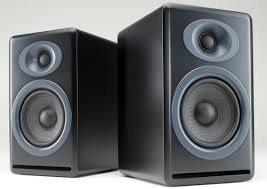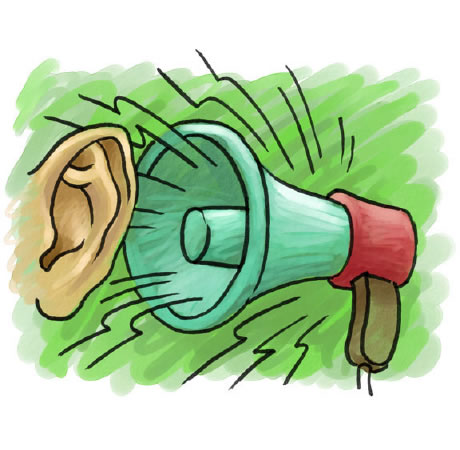Noise is a “Silent Killer” (Ghana EPA).
“Noise can kill” (World Health Organisation) –
Noise Research cites Birth Defects – Learning Difficulties – Heart Attacks – Diabetes – Hypertension – Immune System Changes – Nervous System Damage – Mental Illness
– Low Frequency Noise Exposure Causes Different Types of Damage to Different Internal Organs.

Dear Honourable Ashanti Regional Minister
My experience and observation is that the KMA, the EPA and the Police have certainly failed to protect the people of the region from harmful noise pollution. Sir, if you find this hard to believe then take a drive around your region. It is my personal experience that certain KMA officers have done their best to maintain the noise pollution.
Please honourable Minster read the entirety of this letter and take action to protect the lives and wellbeing of those in your region, especially the children and those in their mother’s womb.
Truly Sir, the noise pollution in your region is shocking, harmful, illegal, disgusting and insane. There are absolutely sufficient Criminal Code Laws, Municipal Bye laws and Constitutional Laws to protect the populace. All that is required is the will to stop the noise by the relevant authorities who already have sufficient resources to do so if they wish to use them. If they need guidance, training or any other assistance I would be delighted to help, free of charge!
On the same day as writing this letter a merchant parked his car a short distance from my home. With my professional noise meter I measured the noise coming from his rooftop loudspeaker at 102 decibels when, according to EPA guidelines, it should have been no more than 55 decibels. Every increment of 10 decibels, approximately doubles the intensity of the noise heard by the ear. As the noisemaker sat in his parked car I handed him written information about the dangers of noise. He threw the paper back at me. I have a video of his car, his car registration plate number, his loudspeaker and the 102 decibel reading on my noise meter.
Churches and street preachers claim they are preaching the Word but their noise pollution tells me they do not even know the Word.
And the work of righteousness shall be peace; and the effect of righteousness quietness and assurance for ever. (King James Bible – Isaiah: 32.17).
The Ghana Criminal Code itself tells us:
Section 22—Duty to Prevent Felony. 
Every person who, knowing that a person designs to commit or is committing a felony, fails to use all reasonable means to prevent the commission or completing thereof, is guilty of a misdemeanour.
Section 69—Causing Harm.
Whoever intentionally and unlawfully causes harm to any person shall be guilty of second degree felony.
From the statements below it is unequivocally obvious that noise pollution is causing harm to human health; in the unborn (foetus), children and adults:
“Noise can kill” so says a report by the World Health Organization and the European Commission’s Joint Research Centre. “Noise has been shown to raise blood pressure and blood-borne concentrations of stress hormones and fatty materials even when people are asleep. These can accumulate over time to block blood vessels and trigger a heart attack”. http://www.newscientist.com/article/dn20326-noise-kills-and-blights-lives-in-europe.html#.VKol6tKUfVD
On the Government of Ghana Official Portal, Mrs Philomena Boakye Appiah, Brong-Ahafo Regional Director of the Environmental Protection Agency (EPA), has reiterated the need for strict adherence to environmental regulations and guidelines on noise pollution for the well-being of the people. Mrs Appiah said, “research shows that noise pollution was a risky health hazard and a silent killer, which could induce hypertension and cause blindness. She said noise pollution causes irritability and indigestion and adversely affect the foetus of pregnant women”. http://www.ghana.gov.gh/index.php/2012-02-08-08-32-47/regional/3050-noise-pollution-is-dangerous-health-hazard-epa
On another website The Regional Director disclosed “that noise pollution could cause
deafness, blood pressure, indigestion, heartburn, ulcers, heart disease, mental illness, fatigue, damages in the nervous system, increased stress/ irritation, decrease in efficiency at work places, sleep interference, decreased academic performance and indirectly weakens the edifice of buildings and bridges”. http://www.ghanadistricts.com/news/?read=40349&sports
“Repeated exposure to noise during critical periods of development may affect a child’s acquisition of speech, language, and language-related skills, such as reading and listening. The inability to concentrate in a noisy environment can affect a child’s capacity to learn”. http://www.epa.gov/air/noise/ochp_noise_fs_rev1.pdf
“Prolonged exposure to loud noise alters how the brain processes speech, potentially increasing the difficulty in distinguishing speech sounds, according to neuroscientists. Exposure to intensely loud sounds leads to permanent damage of the hair cells, which act as sound receivers in the ear. Once damaged, the hair cells do not grow back, leading to noise-induced hearing loss”. http://www.sciencedaily.com/releases/2014/07/140731102524.htm
“The most dramatic effects are in heart disease, because exposure to noise can kill people”. http://www.newscientist.com/article/dn20326-noise-kills-and-blights-lives-in-europe.html#.VKol6tKUfVD
“Changes in the immune system and birth defects have been attributed to noise exposure”. http://en.wikipedia.org/wiki/Health_effects_from_noise
“Effects of noise in pre-school and school aged children include cognitive tasks are impaired, like reading, long term memory, attention and motivation”. http://www.who.int/ceh/capacity/noise.pdf
“Noise can pose a serious threat to a child’s physical and psychological health, including learning and behaviour”. http://www.epa.gov/air/noise/ochp_noise_fs_rev1.pdf
“Sleep Deprivation of just 30 minutes of daily sleep debt raises weight and diabetes risk”. http://www.naturalblaze.com/2015/03/just-30-minutes-of-daily-sleep-debt.html
“Solitary confinement and prolonged sleep deprivation are just two examples of the psychological torture methods”. https://www.icrc.org/eng/assets/files/other/irrc-867-reyes.pdf
“Certain interrogation reports highlight the use of loud music reaching upward of 79 decibels for weeks and even months”. http://www.medicaldaily.com/torture-methods-sound-how-pure-noise-can-be-used-break-you-psychologically-318638
“FEELING THE MUSIC CAN BE DANGEROUS TO YOUR HEALTH”© “Long term exposure to excessive levels of High Intensity Low Frequency (HI/LF) sound, such as that produced by highly amplified bass music, airplanes, racing cars, battle field noise, etc. can not only be physically harmful, but can cause complications that can lead to death”. http://www.omnisonic.com/bbillings.html .’
“VERY LOUD SOUNDS CAN RIP EAR, LUNG AND OTHER VIBRATING TISSUES”. “A sound wave is a pressure wave; that’s why you can sometimes feel your body vibrate during loud, low sounds. When body tissues resonate with the sound’s frequency, the pressure increases.” http://www.baudline.com/erik/bass/facts_about_bass.html
“PROLONGED SLEEP DEPRIVATION CONFIRMED AS A METHOD OF TORTURE. The UN Committee Against Torture (UN CAT) has explicitly identified prolonged sleep deprivation as a method of torture. Sleep deprivation can cause impaired memory and cognitive functioning, decreased short term memory, speech impairment, hallucinations, psychosis, lowered immunity, headaches, high blood pressure, cardiovascular disease, stress, anxiety and depression.” http://waubrafoundation.org.au/resources/public-officials-at-risk-criminal-charges-for-torture-public-statement/
“The Physicians for Human Rights also consider sleep deprivation as well as sensory bombardment with noise to be methods of torture, and list the clinical evidence of the harm to physical and mental health, and the legal precedents to support this opinion in their document “Leave No Marks”. http://waubrafoundation.org.au/resources/public-officials-at-risk-criminal-charges-for-torture-public-statement/
Noise can cause the “fight or flight” response. “The “fight or flight” response is a physiological reaction in the body that enables humans and animals to rapidly mobilize a lot of energy in response to a threat to survival. When the threat is perceived, the adrenal cortex releases stress hormones and the thyroid gland stimulates the metabolism. That rush of chemicals results in the heart beating faster, breathing becomes faster, the nervous system is on high alert and the larger muscles receive more oxygenated blood. It all happens automatically to ready the body for two reactions to a threat: to fight or to run”. http://science.unctv.org/content/driving-fight-or-flight-response
And the work of righteousness shall be peace; and the effect of righteousness quietness and assurance for ever. (King James Bible – Isaiah: 32.17).
From the table below notice that normal conversation is 60db
“The Environmental Protection Agency of Ghana puts permissible ambient noise levels in residential areas at 55  decibels (db) during the day and 48db at night”.
decibels (db) during the day and 48db at night”.
“Those at and around educational and health facilities was put at 55 db during the day and 50 db at night, while the noise level for areas with commercial or light industrial activities was registered at 60 db and 55 db during the day and night respectively”.
“The new guidelines also permit 65 db noise levels during the day and 60 db during the night for light industrial areas and places of entertainment and public assembly such as churches and mosques”.
“Predominant commercial areas, according to the guidelines, are allowed 70 db during the day and 65 db at night, while the noise level for heavy industrial areas was pegged at 70 db during the day and night”. http://thechronicle.com.gh/epa%C2%ADsets%C2%ADguidelines%C2%ADfor%C2%ADnoise%C2%ADmaking/
Daily Guide
21 March 2014 | Health
https://www.modernghana.com/news/530871/hypertension-leading-killer-disease.html
DR KOFI Agyenim Boateng, a consultant physician at the Komfo Anokye Teaching Hospital (KATH) in Kumasi has identified hypertension, a non-communicable disease as a leading cause of death in Ghana lately.
According to him, the disease trails behind road accidents and death from injuries which, in his opinion, are the leading causes of death in the country.
He described the situation as significantly alarming which the stakeholders need to critically look at and come up with pragmatic measures to prevent.
He reminded Ghanaians about the high prevalence of hypertension and diabetes and other non-communicable diseases in the country.
From the Ghana (1960) Criminal Code plus Amendments, and the Constitution of the Republic of Ghana 1992 it is unequivocally obvious that laws are in place to prevent the harm caused by noise pollution:
From the Criminal Code:
Section 22—Duty to Prevent Felony.
Every person who, knowing that a person designs to commit or is committing a felony, fails to use all reasonable means to prevent the commission or completing thereof, is guilty of a misdemeanour.
Section 69—Causing Harm.
Whoever intentionally and unlawfully causes harm to any person shall be guilty of second degree felony.
Section 71—Exposing Child to Danger.
(1) Whoever unlawfully—
(a) exposes a child to danger or abandons a child under twelve years; or
(b) exposes any physically or mentally handicapped child to danger or abandons a physically or mentally handicapped child in such a manner as to cause any harm to the child—
shall be guilty of a misdemeanour.
Section 72—Negligently Causing Harm.
Whoever negligently and unlawfully causes harm to any person shall be guilty of a misdemeanour.
Section 287—Carrying on of Noxious Trade, and other interference with Public Rights. Whoever, without lawful authority or excuse (the proof whereof shall lie on him) commits any of the following nuisances, namely— (a) carries on any noxious, offensive, or noisy business at any place, or causes or permits any noxious or offensive matter to be collected or continue at any place, or so keeps any animals at any place, as to impair or endanger the health of the public inhabiting or using the neighbourhood of that place, or as to cause material damage to the lands, crops, cattle, or goods of such public, or as to cause material interruption to such public in their lawful business or occupations, or as to materially affect the value of their property; or (b) so makes, keeps, or uses any explosive matter, or any collection of water, or any other dangerous or destructive thing, or any building, excavation, open pit, or other structure, work or place, or so keeps any animal or permits to be at large, as to cause danger of harm or damage to the persons or property of the public; or any well, spring, or reservoir, so as to deprive the public of the benefit thereof; or (c) corrupts or fouls the water of any public well, tank, spring, reservoir, or place used or intended for supplying water to man or for fish culture, shall be liable to a fine not exceeding ¢500,000 and shall, upon conviction for a continuance or repetition of any such offence, be guilty of a misdemeanour.
Section 288—Explanation as to Carrying on of Noxious Trade, etc. The following provisions shall have effect with respect to the nuisance of carrying on a noxious, offensive, or noisy business, at any place, or of causing or permitting noxious or offensive matter to be collected or continue at any place, or of keeping animals at any place as mentioned in this Chapter, namely— (a) “business” includes not only any trade, manufacture, work, business, or occupation carried on for gain, but also any continued or frequent repetition of any act or series of acts of any kind; and (b) it is necessary, in order that a person may be punishable in respect of any such nuisance, that the prejudice or danger caused thereby should extend to persons inhabiting or occupying, under separate tenancies, not less than three houses or other tenements. Section 289—Explanation as to Obstruction of Public Way. (1) A person shall not be guilty, within the meaning of this Chapter, of obstructing the public use of any public way or work by reason only of his being a party to any meeting or assembly assembled in, or upon or near any public way or work, unless the purposes of such assembly are or include the obstruction of the public by force or threats or show of force. (2) “Obstruction” of the public use of a public way or work includes the making or using of any fetish or charm for the purpose of preventing any person from using such way or work.
Nuisances and Obstructions in Streets, and the like
Section 296—Throwing Rubbish in Street.
Whoever does any of the following acts shall be liable to a fine not exceeding ¢200,000 namely—
Causing Noise in Town.
(7) in any town wilfully or wantonly, and after being warned to desist, makes any loud or unseemly noise howsoever caused to the annoyance or disturbance of any person;
Drumming, etc., in Town at Night.
(8) in any town, without a licence in writing from the Minister or a local authority beats or plays any drum, gong, tom-tom, or other similar instrument of music between eight o’clock at night and six in the morning;
Section 298—Acts tending to disturb the peace in a public place.
Whoever in any public place, or in any place within sight or hearing of persons then being in a place, disturbs the peace by fighting or quarrelling with any other person, or by making any loud or unseemly noise; or abets an unlawful fight, or uses or applies to any other person then being in such public place or within sight or hearing thereof, any violent or abusive term of reproach, or sings any profane, indecent, or obscene song, or exposes any defamatory of insulting writing or object, or with the intention of annoying or irritating any other person, sings any scurrilous or abusive song or words, whether any person be particularly addressed therein or not or is guilty of any riotous, indecent, disorderly, insulting behaviour, to the obstruction or annoyance of any passenger or person in such public place, shall be liable to a fine not exceeding ¢200,000.00.
Please note the following taken from The Criminal Code 1960:
PART I—GENERAL PROVISIONS
CHAPTER 1—PRELIMINARY MATTERS
Section 1—Interpretation
“harm” means any bodily hurt, disease, or disorder, whether permanent or temporary;
“public place” includes any public way and any building, place, or conveyance to which for the time being the public are entitled or permitted to have access, either without any condition or upon condition of making any payment, and any building or place which is for the time being used for any public or religious meeting or assembly, or as an open Court;
“public way” includes any highway, market place, lorry park, square, street, bridge, or other way which is lawfully used by the public;
acts are done “publicly”—
(1) if they are so done in any public place as to be likely to be seen by any person, whether such person be or be not in a public place; or
(2) if they are so done in any place, not being a public place, as to be likely to be seen by any person in any public place;
“town” means—
(a) the area of authority of a Municipal or Urban Council; or
(b) any place to which the Towns Ordinance applies; or
(c) any place (whether a town or not) which the Minister may by executive instrument order.
From the Constitution under Chapter Five, “Fundamental Human Rights and Freedoms”:
12.(1) The fundamental human rights and freedoms enshrined in this chapter shall be respected and upheld by the Executive, Legislature and Judiciary and all other organs of government and its agencies and, where applicable to them, by all natural and legal persons in Ghana, and shall be enforceable by the Courts as provided for in this Constitution.
12.(2) Every person in Ghana, whatever his race, place of origin, political opinion, colour, religion, creed or gender shall be entitled to the fundamental human rights and freedoms of the individual contained in this Chapter but subject to respect for the rights and freedoms of others and for the public interest.
25 (1) All persons shall have the right to equal educational opportunities and facilities and with a view to achieving the full realisation of that right
Writer’s Comment: Noise can negatively impact on the health of the foetus by causing birth defects and in children in terms of cognitive tasks being impaired. This then denies the child of equal educational opportunities due to the birth defects or impairments to reading, attention, motivation, hearing, behaviour and long term memory. The child because of the noise caused impairments or birth defects is at a disadvantage without equal educational opportunities. Children need to and should have all their God given faculties intact when being educated. These faculties should not be compromised, harmed or destroyed by noise or anything else! If they are then 25(1) of the Constitution is defied.
26.(1) Every person is entitled to enjoy, practice, profess, maintain and promote any culture, language, tradition or religion subject to the provisions of this Constitution
Writer’s Comment: The home is a person or persons’ refuge from the world. When noise from outside the home invades that home without invitation or permission it interrupts and disturbs the activities of that home and can even prevent the normal activities of the person/s in the home. When in the home it can be difficult and nigh impossible for person/s to escape from the noise coming from the outside. In such cases 26.(1) is defied because it prevents the entitlements of 26.(1). Noise can be a form of brainwashing and can change a person/s’ desires, thoughts and ideas. Forcing certain religious ideas, preaching or music or other audible messages, frequencies or indoctrination into the sanctity, privacy and tranquillity of a home is tantamount to brainwashing.
http://www.phy.duke.edu/~dtl/89S/restrict/Historical/08Frazier.html People should be allowed to lawfully choose what they listen to and do in their home. When noise is forced into a person/s’ home 26.(1) of the Constitution is defied.
26. (2) “All customary practices which dehumanise or are injurious to the physical and mental well being of a person are prohibited”.
Writer’s Comment: In Ghana it is a customary practice to make verbal announcements to communities. For example, community information centres are a customary practice derived from the customary practice of the town crier. Such customary practices from community information centres which produce noise via loudspeakers and amplifiers are injurious to the physical and mental well being of a person and are therefore prohibited. If not prohibited then they are in defiance of 26.(2) of the Constitution.
28. (1) (d) “children and young persons receive special protection against exposure to physical and moral hazards”.
Writer’s Comment: Noise, because of its harmful effect on the physical and psychological health of children requires that children be given special protection against it. Therefore 28.(1) (d) demands that children be protected from harmful noise. The only protection from noise is a quiet environment to live, play and be educated in. If noise is imposed upon children then 28.(1) (d) of the Constitution is defied because special protection is not provided to them. Loud music also has a profound impact on the health and normal brain development of the fetus nestled in its mother’s womb http://www.walidfitaihi.com/harmful-side-effects-of-loud-blaring-music/
28. (4) No child shall be deprived by any other person of medical treatment, education or any other social or economic benefit by reason only of religious or other beliefs.
Writer’s Comment: Noise is in enormous abundance throughout Ghana with much of it coming from religious preaching from churches, community information centres and street preachers. Nearly all use some form of loudspeaker and amplification system. In this case children are being deprived of educational, social and economic benefits when their physical and psychological health is injured or impaired by reason of noise perpetrated on the basis of religious preaching and music. When birth defects and or impairments to reading, attention, motivation, hearing, behaviour and long term memory are caused by the noise from religious activities then 28.(4) of the Constitution is defied.
Neuroendocrinologist and professor at Stanford University, Dr. Robert Sapolsky, explains the phenomenon in which the release of adrenaline and cortisol causes memory loss. http://www.walidfitaihi.com/harmful-side-effects-of-loud-blaring-music/
Harmful side effects of loud, blaring music
JUNE 30, 2013 BY WALIDFITAIHI
The human body and each of its cells, tissues, organs, and organ systems have a certain resonance and they function optimally within a specific range of sounds.
The vibrations in the human body create a natural pattern of sounds that is essential to human health and balance: physically, mentally, and spiritually.
The sound environment plays a vital role in the ability of the brain to control the nervous system, to send and receive billions of nerve impulses, convert signals into mental images, and to process information.
Sounds can profoundly influence the mental images created by the brain and can change perception and understanding of reality.
Either voluntary or involuntary exposure to external environmental sounds that do not match the rhythmic sounds of the human’s internal environment may cause stress, tension, and fatigue.
Negative impacts of disturbing sounds include low energy levels, poor performance at work, occupational errors, and an inability to make clear cut decisions. The louder the sounds, the more detrimental and pronounced their effects will be.
Clinical psychologist, Professor Bart Billings, said: “Long term exposure to excessive levels of high intensity, low frequency sound, such as that produced by highly amplified bass music or heavy metal, airplanes, racing cars, battle field noise, and others can not only be physically harmful, but can cause complications that can lead to death.”
When one listens to music that is out of sync with the frequency produced by natural sounds the body perceives these disturbing sounds as a threat and reacts to these sounds as such.
The “fight or flight” response is turned on to prepare the body to flee from the pending threat or to enter a battle and fend off the attack. Stress hormones, adrenaline and cortisol, are secreted which raise blood pressure, pulse rate, and blood cholesterol levels.
These hormones are beneficial and necessary if the body is entering battle or is under assault because they direct blood flow to muscles in the arms and legs and increase oxygen intake to fuel the body during the physical challenge.
Also, the viscosity or stickiness of the blood is increased so the blood clots rapidly to protect the body from bleeding to death if it is wounded during battle. This response can be life saving but only when it is truly needed. On the other hand, these hormones can be harmful to human health when they are coursing through the body for a long time, especially when there is no real physical threat.
When one feels pain, the brain releases endorphins; hormone-like substances which act as a natural pain-killer and opiate. Endorphins produce a state of relaxation and a feeling of well-being.
Loud music affects every cell in the body and it elicits a reaction in the body equivalent to the response to the perception of pain.
Endorphins are released, accompanied by a feeling of sedation, well-being, and pleasure.
That is how the addiction to loud music begins, as stated by the researcher Dr. William Glasser in his book, ‘Positive Addiction’. Endorphins may explain teenagers’ addiction to loud music and the incessant tendency of some to listen to this music for several hours each day.
Gradually, they increase the volume to higher and higher levels to the extent that you can clearly hear the music that the youngster sitting next to you is listening to, even though he/she is using personal earphones.
Music production companies are aware of the addictive nature of high intensity, low frequency sounds and they market such music to those between the ages of 16 and 25 years who are most likely to be drawn to such recordings.
Loud, heavy metal music has a wide range of negative effects on human health, starting with the ear.
The inner ear or choclea contains thousands of tiny hair cells that convert the vibrations from incoming sounds into electrical signals that are sent to the brain to detect the sounds and discern what they are.
Very loud sounds can damage these hair cells and once they are damaged they cannot be repaired or replaced. Over time, listening to very loud music can cause hearing loss and ringing in the ears or head (tinnitus).
In a joint study between the National Institute for Physiological Sciences in Japan and the University of Muenster in Germany, researchers demonstrated that listening to loud music through earphones for extended periods can cause changes in the ear and the nerves of the brain that result in a decline in the ability to distinguish sounds.
A prolonged increase in the secretion of the hormone cortisol has another negative impact on the body; namely it can lead to memory loss.
A study in Germany showed that memory recall among heavy metal music lovers is reduced by 15 percent to 60 percent. In another study of 600 people who rarely listen to loud music, only 4 percent of them demonstrated memory loss in comparison with a group in a similar age range who frequently listen to loud music, of whom around 21 percent of them experienced memory loss.
Neuroendocrinologist and professor at Stanford University, Dr. Robert Sapolsky, explains the phenomenon in which the release of adrenaline and cortisol causes memory loss.
The stress hormones direct blood glucose to the large muscles in the body. This reduces the level of blood glucose that reaches the area in the brain called the hippocampus which is highly responsible for memory recall.
Therefore, continuously listening to loud music can impair learning and the ability to retain and retrieve information in the brain.
A study conducted by the British Royal Academy reported that internationally, up to 75,000 young people between the ages of 14 and 24 years have died as a result of an addiction to loud, blaring music.
Professor Frederick Harms from the British Royal Academy for Music studied 6,550 patient cases suffering from psychological disorders and he said that the pressures of life may create a state of despair in some youth which drives them toward listening to loud music for hours at a time. These young people commonly develop psychological imbalances, insomnia, decreased appetite, social withdrawal, weakened immune system, and in some cases a nervous breakdown that can be fatal.
Loud music also has a profound impact on the health and normal brain development of the fetus nestled in its mother’s womb.
No doubt, the effects of listening to loud music on the human soul and how it distances one from the glorification of the Creator and separates us from the natural universe that we are an integral part of must also be explored.
The infatuation with loud music is a destructive illness. A heightened awareness in our community and understanding these effects can help us protect the physical, mental, and spiritual health and vitality of our loved ones.
Low frequency noise (LFN) (≤ 500 Hz, including infrasound) exposure causes different types of damage to different organs
Low Frequency Noise Exposure and Biological Tissue: Reinforcement of Structural Integrity? (PDF Download Available). Available from: https://www.researchgate.net/publication/286514638_Low_Frequency_Noise_Exposure_and_Biological_Tissue_Reinforcement_of_Structural_Integrity
Abstract
Low frequency noise (LFN) (≤ 500 Hz, including infrasound) exposure causes different types of damage to different organs. In the pericardium – a translucid sac that surrounds the heart – it causes the formation of a new layer of tissue, increasing pericardial thickness 100 to 300%. In the blood vessels, LFN exposure induces thickening of the vessel wall, resulting in a continuous, blanket-like layer throughout the vessel. This is in opposition to artherosclerotic plaques, for example, which attach to vessel walls in clumps. In the respiratory tract, LFN exposure causes the growth of diffuse fibrosis in the trachea and focal fibrosis in the lung. Simultaneously, it is responsible for the shearing and depletion of ciliary fields and fusion of brush cell microvilli. How the transmission of acoustical energy induces these biological effects is still greatly unknown. Although biochemical factors must contribute greatly, biomechanical effects due to the direct presence of acoustical phenomena cannot be discarded. The need for biological tissue to maintain structural integrity given the probable acoustical disturbance of biological tension and compression factors, will be discussed within the scope of vibroacoustic disease and the principles of biotensegrity.
How many in Ghana daily defy Section 22 of the Criminal Code by allowing those who perpetrate noise and other pollution to do harm without using all reasonable means to prevent it? “Noise Can Kill”. Is death and disease not enough harm for us to take all reasonable means to prevent it?
Section 22—Duty to Prevent Felony.
Every person who, knowing that a person designs to commit or is committing a felony, fails to use all reasonable means to prevent the commission or completing thereof, is guilty of a misdemeanour.
Section 69—Causing Harm.
Whoever intentionally and unlawfully causes harm to any person shall be guilty of second degree felony.
Writer’s Comment: The writer of this document cannot in all good conscience be silent when so many lives are being destroyed by noise and other environmental pollution in Ghana. The evidence for the deadly, debilitating and dire health consequences of noise and other environmental pollution on the unborn, children and adults is too well documented and proven to be ignored. The laws are in place to stop this destruction of human health. The Biblical command is in place to love our neighbour. So why don’t we get on with it and join together to free Ghanaians from the birth defects and the other physical and mental illnesses caused by pollution. Will you join me to help Ghanaians?
Medscape.com
I have taken the following excerpts from Medscape.com, a medical reference library, which among other noise dangers speaks about the health impacts of noise on children
Noise and Children
Medscape declares:
“The WHO (World Health Organisation) has documented seven categories of adverse health effects of noise pollution on humans. Much of the following comes from the WHO Guideline on Community Noise………..
Children are at risk as well. Children who live in noisy environments have been shown to have elevated blood pressures and elevated levels of stress-induced hormones.
The effects of noise pollution on cognitive task performance have been well-studied. Noise pollution impairs task performance at school and at work, increases errors, and decreases motivation. Reading attention, problem solving, and memory are most strongly affected by noise. Two types of memory deficits have been identified under experimental conditions: recall of subject content and recall of incidental details. Both are adversely influenced by noise. Deficits in performance can lead to errors and accidents, both of which have health and economic consequences.
Cognitive and language development and reading achievement are diminished in noisy homes, even though the children’s schools may be no noisier than average. Cognitive development is impaired when homes or schools are near sources of noise such as highways and airports. Noise affects learning, reading, problem solving, motivation, school performance, and social and emotional development. These findings suggest that more attention needs to be paid to the effects of noise on the ability of children to learn and on the nature of the learning environment, both in school and at home. Moreover, there is concern that high and continuous environmental noise may contribute to feelings of helplessness in children.
Noise produces negative after-effects on performance, particularly in children. It appears that the longer the exposure, the greater the effect. Children from noisy areas have been found to have heightened sympathetic arousal indicated by increased levels of stress-related hormones and elevated resting blood pressure. These changes were larger in children with lower academic achievement. As a whole, these findings suggest that schools and daycare centers should be located in areas that are as noise-free as possible.
Children, the elderly, and those with underlying depression may be particularly vulnerable to these effects because they may lack adequate coping mechanisms. Children in noisy environments find the noise annoying and report a diminished quality of life”. http://www.medscape.com/viewarticle/554566_3
STUDY OF NOISE LEVELS IN THE CITY OF KUMASI By Ebenezer Omari Abankwa (BSc. Mechanical Engineering)
A Thesis submitted to The School of Graduate Studies Kwame Nkrumah University of Science and Technology, Kumasi, Ghana in partial fulfillment of the requirements for the Degree of MASTER OF SCIENCE IN MECHANICAL ENGINEERING Department of Mechanical Engineering College of Engineering SEPTEMBER, 2014.
ABSTRACT
Kumasi is the capital town of Ashanti region and it has been observed that noise pollution is ever increasing. Therefore it is imperative to conduct a research of noise levels at some areas in Kumasi to ascertain its level, whether it conforms to Environmental Protection Agency (EPA ) standards. Measurements of daytime noise levels was carried out in three bus terminals, two timber industries, three churches and three funeral gatherings using DT-8852 Precision digital sound level meter. The three bus terminals namely Kwame Nkrumah University Of Science and Technology ( KNUST) Junction, Anloga Junction and Kejetia from the research had their daytime noise levels of 78.8 dBA, 72.1 dBA and 78.3 dBA respectively. The two timber industries, company A and company B had their day time noise levels of 84.1 dBA and 82.4 dBA respectively. Day time noise levels from the Church A, Church B and the Church C were 78.3 dBA, 82.8 dBA and 81.4 dBA respectively. Funeral ground 1 recorded the highest noise level of 84 dBA, followed by funeral ground 3 of 83.6dBA then funeral ground 2 of 79.2dBA. The bus terminals, timber industries, churches and funeral gatherings had their day time noise levels exceeding the permissible levels of 70 dBA, 70 dBA, 60 dBA and 65dBA respectively by EPA standards. It is recommended that the public should be made aware of the adverse effects of noise pollution. The Television, radio and newspaper should be used as media to promote campaign on noise levels, its effect and control.
ir.knust.edu.gh/bitstream/123456789/7090/1/EBENEZER%20OMARI.pdf
Writer’s Comment:
The writer of this eleven page document imported a professional noise meter twice (the first never got past Ghana Post tracking). With the second noise meter arriving via Fedex the writer has recorded the following noise levels in Kumasi:
• Church noise levels at over 90db in residential areas at night.
• Vehicles with rooftop loudspeakers driving past and blasting at 110db.
• An information center some 80 metres away broadcasting into the writer’s bedroom and producing 91db in the bedroom at night and during the day.
o Noise from the information centre continued for approximately seven hours per every twenty four hour period, seven days per week, every week of the year. The writer’s family suffered this for approximately one year. KMA officers who didn’t even know how to measure noise properly with their noise meter seemed determined not to stop the noise. An EPA officer told the writer and his wife lies, and Police were ineffective to stop the noise. Following the writer’s open letter to the then Regional Minister and KMA Chief Executive the information centre was closed down until the writer and his family were forced to move residence by what seemed to be a conspiracy against them to bring back the noise. There is now a new information centre in a new building a few meters from where the old was located
• A bar, approximately one kilometer from the writer’s residence produced 65db in the writer’s bedroom at night for several hours once and sometimes twice each week.
• Street preachers producing in excess of 90db during the day and at 4.00am and 5.00am
——————————



